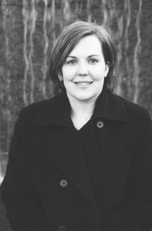Three decades of SAAB leaders reminisce
Open gallery

The life of a SAAB vice president is a busy one. Besides leading a group of more than 20 student representatives in discussions on academic issues and reviewing and awarding grants, the SAAB vice president also sits on the faculty Curriculum Committee, the Board of Trustees, and the Student Executive Council. It is a time-consuming job that can take upwards of 20 hours per week, especially during the grant selection process. That’s a significant commitment given the rigorous demands of Lewis & Clark courses.
But they have no regrets. “SAAB was one of the high points of my time in college,” says Shelby Uritz ’96, who served two terms as vice president in the mid-’90s and now works as an analyst for the U.S. Department of Defense. “It was a great experience. I loved all the things I got to do.”
She loved working with faculty and getting involved in curricular decision making but says that the grant program was one of the most satisfying parts of her SAAB experience. She remembers one instance in which a student requested a grant to assist in glucose research. The board asked the student what the research might accomplish, and the student responded, “It might lead to clues for the prevention or cure for diabetes.” Uritz says board members were in awe of how far-reaching the SAAB grants could be.
Buzzy Nielsen ’02, currently serving his second term as SAAB vice president, agrees, saying, “The part of it that’s really amazing is knowing you’re helping other students with incredible projects. How do students at other schools even begin to do research? It’s hard to imagine what it would be like if we didn’t have it.”
Anthony Abena ’86, SAAB vice president in 1984, is also surprised that other schools don’t have such a program, considering the value of the experience. “SAAB gives students a very powerful voice in the academic life of college,” he says. Through his work with SAAB, he realized the power of research to help people make better decisions in their lives. In fact, he later worked for a firm that specialized in information technology research. He says he is still impressed at the quality of the presentations he saw while working with SAAB. “We were tough on people who came for money,” he says, chuckling.
Uritz also believes that SAAB gives students invaluable experience in how to write and present a grant, but as vice president, she gained another set of skills. She says that in addition to learning how to lead a group of people, she learned how to conduct herself professionally at an early age, in part because of working so closely with faculty.
Abena agrees, saying, “SAAB ended up giving me tremendous exposure to leading a sharp group of people and balancing different perspectives. SAAB board members are the cream of the crop. I remember having very interesting and drawn-out discussions. They were people with lots of passion.”
—by Kathleen Holt
More L&C Magazine Stories
Lewis & Clark Magazine is located in McAfee on the Undergraduate Campus.
MSC: 19
email magazine@lclark.edu
voice 503-768-7970
fax 503-768-7969
The L&C Magazine staff welcomes letters and emails from readers about topics covered in the magazine. Correspondence must include your name and location and may be edited.
Lewis & Clark Magazine
Lewis & Clark
615 S. Palatine Hill Road MSC 19
Portland OR 97219

